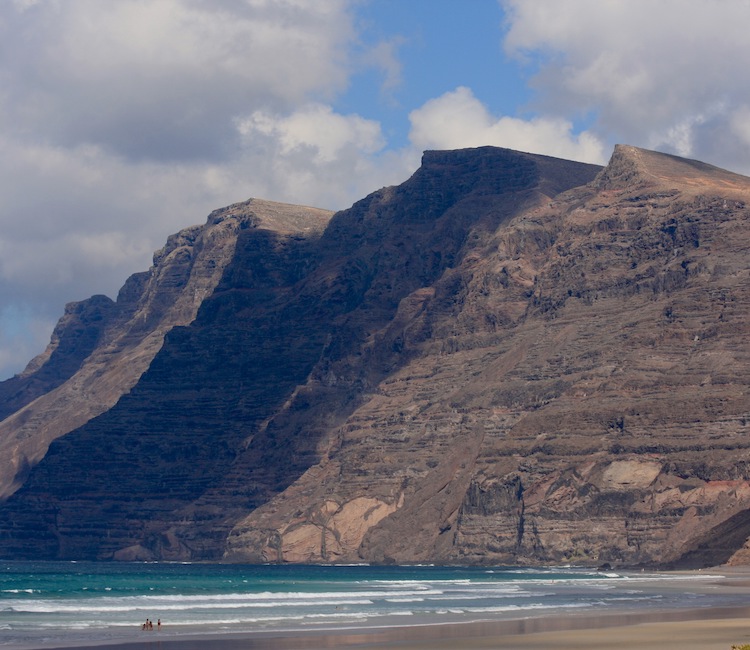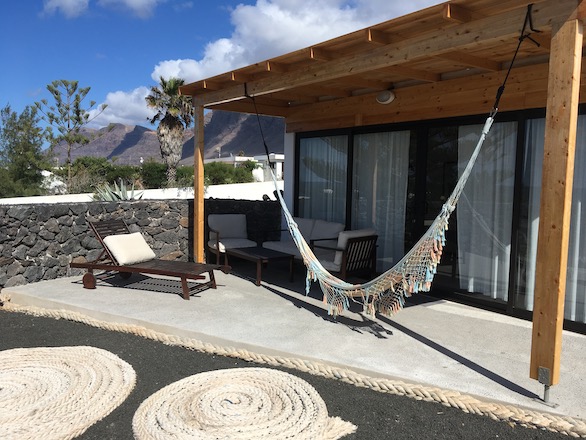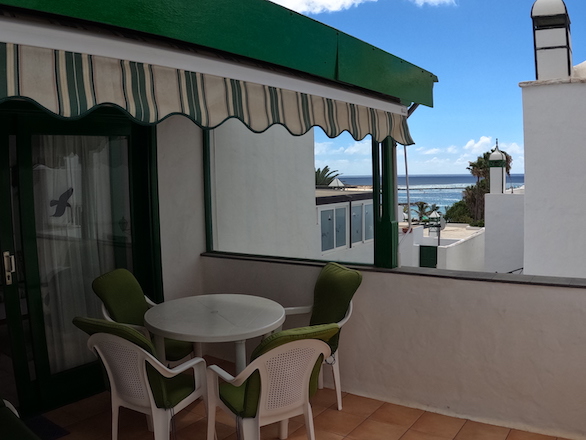Lanzarote Beaches
Papagayo Beach
Papagayo beach, the jewel of the South is a protected area, and to access it there is a charge of three euros. A small price to pay in view of all the treasures held in this untamed area, full of unspoilt beaches. Here, the only signs of civilisation are a car park, a campsite and a couple of beach bars.
Papagayo beach has the typical perfect crescent shape, and is fully protected from the wind by cliffs. A small bay, its waters are particularly suitable for snorkelling.
Famara Beach
This is a wild space with fine, golden sands stretching for over five kilometres in the north-west of Lanzarote. The beach lies within the Chinijo Archipelago Natural Park, between the fishing village of La Caleta de Famara and the cliffs of the Risco de Famara. The winds and strong waves make this a perfect place for water sports such as surfing, bodyboarding, windsurfing, or kitesurfing. A wonder of nature.
Playa de los Caletones
This beach, located near the coastal village of Órzola in the north of Lanzarote, is actually formed by a series of small coves. The place owes its rugged terrain to the remains of the famous Corona volcano, which lend it a unique and exotic appearance. The beach lies very close to Roque del Este and the islets of the Chinijo Archipelago. The beach can be accessed by car, and you can park nearby.
Playa del Pozo (Playa Quemada)
Playa Quemada is a fantastic spot, an incredibly beautiful sight in this part of south-eastern Lanzarote. Playa del Pozo is a small beach, barely 300 metres long, with pebbles and black sand. It is astoundingly beautiful and is normally deserted.
Playa Honda
This beach, with its golden sands and calm waters, belongs to the village of the same name, and lies close to the town of San Bartolomé. It is 1,300 metres long, and its semi-urban location tends to attract the crowds. It has a delightful path linking the area with Puerto del Carmen and Arrecife. It is not far from César Manrique Lanzarote Airport.
Playa del Janubio
This awe-inspiring, wild beach with black sands lies close to the town of Yaiza, and is a haven of peace and calm. It is around 800 metres long, but the currents are strong, making it unsuitable for swimming.
Playa El Ancla o Playa del Rey
Situated at the entrance to Costa Teguise from Arrecife, this small beach surrounded by rocks offers safe conditions for bathing and snorkelling. However, its small size (it stretches for barely 150 metres) means that it tends to get very crowded. It has golden sands and clear waters. The beach’s nickname — Playa del Rey [the King’s Beach] — results from its proximity to Las Maretas, a residence that once belonged to King Hussein of Jordan, and which he gave as a gift to ex-King Juan Carlos I.
Los Charcones at Playa Blanco – a natural swimming
Volcanic activity and the pounding of the Atlantic Ocean both contributed to the formation of amazing natural swimming pools on the coasts of Lanzarote.
Punta Mujeres – another natural swimming pool
This little fishing village is located at the other end of the island, on the north-eastern coast and around 2 kilometres from tourist attractions such as the Jameos del Agua and the Cueva de los Verdes. Although it is not among the best-known places on the island, it is worth visiting Punta Mujeres because, among other things, it has some of the finest examples of traditional Lanzarote architecture, not to mention the interesting cuisine available here.




